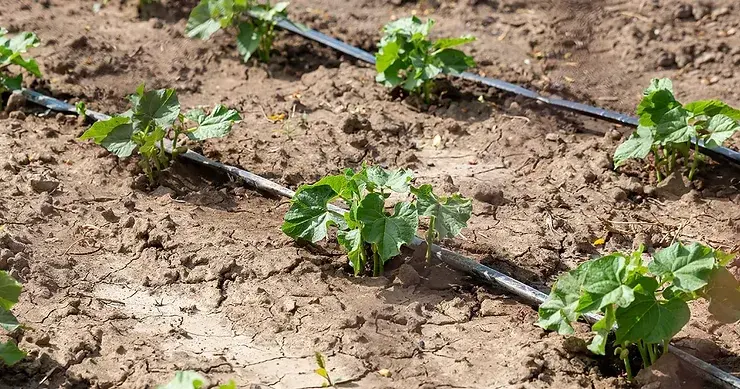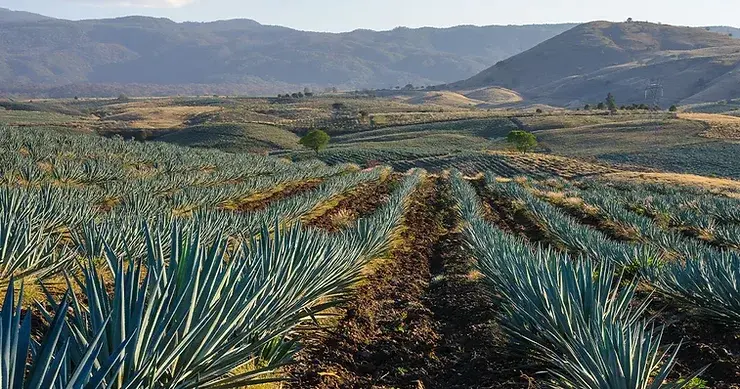
Redefining Our Water Future: Dealing with Drought in the Central Valley

This is article is a continuation of our series, Redefining Our Water Future. Read our previous articles, Why Water? and Digging into Agricultural Water Use.
As long-term droughts have impacted the agricultural sector in recent years, many farmers are implementing new technologies and practices to reduce water consumption. To learn more about what adapting to drought looks like on the ground, we spoke to Stuart Woolf, President and CEO of Woolf Farming and Processing, a family-owned farming and food processing business.
His farm consists of 30,000 acres, and the company is one of four tomato processors in California (93 percent of all the country’s tomato products come from California). The farm also grows almonds for almond paste, a raw input for almond milk. Stuart’s parents started the farm in 1974 when there was a culture of abundance regarding farming and resource availability. As a result, Stuart’s father was focused on optimizing the land he was farming and growing the crops that California had an advantage in at the time. Today, Stuart says, his job is to “figure out how to optimize the grounds he is fallowing.”
Water rights in the West work through a prior appropriation system, which means that the first person to use water for a “beneficial use” acquires the rights to that water. Stuart’s land holds junior water rights, meaning when there is not enough water, he and other farmers in the Westlands Water District are the first to lose water access. Because they can’t rely on surface water, Stuart’s farm pumps water from underground aquifers. But in 2014, California passed the Sustainable Groundwater Management Act to protect the state’s rapidly dwindling groundwater resources, and the law began to go into effect in 2022. Stuart says he would not be surprised if 40 percent of his district is fallowed (not planted), which would be close to 250,000 acres.
It bears mentioning that California recently had a series of atmospheric rivers that delivered 32 trillion gallons of water to the state over three weeks, improving reservoir levels and snowpack. Stuart says the wet weather in January benefited farms on flat ground that was prepped for the upcoming season and didn’t suffer severe flooding or erosion. While he hopes to see some improvement in the aquifer recharge, he doesn’t believe the state is doing enough to enhance groundwater banking and recharge capacity. But California is known for its long periods of drought punctuated with intense storms, and the wet weather, while helpful, won’t end the drought or undo the driest period in the West in the last 1,200 years.
Because Stuart has been dealing with reduced water access for years, he has already adopted many water conservation practices and technologies. He says that the change that has had the greatest impact on his farm has been the implementation of micro irrigation, which also significantly improved his yields. The farm collects data on evapotranspiration, soil moisture and temperature, and plant life cycles and combines that with information on weather forecasts to know precisely how much water to apply through drip lines. He has also shifted some of his acres from water-intensive almonds to row crops, especially as tomato markets have improved.

While Stuart has worked to get his water application dialed in, many farmers in California are not using any of these practices or technologies because they have reliable access to cheap water. While Stuart’s water costs $1500/acre-foot, land just 120 miles away has reliable water access at $15/acre-foot. Many of these farms are still flood irrigating and have little incentive to invest in water conservation. As a result, there is still a lot of opportunity to improve water efficiency on farms in California and the West. For farmers who have exhausted their water-saving options, Stuart believes the next major development will be using genetics to discover or create better drought and salt-tolerant crops.
Many farmers in California and across the west are fallowing land that does not have sufficient water. It may seem like it would make more sense to sell those acres, but since water rights are attached to the land, farmers like Stuart want to keep that extra water for the acres they are planting. Another option would be to sell the water, but farmers are hesitant to make it seem like they don’t need it and risk losing water access in the future. So Stuart is exploring a few different options for his fallowed fields. The first is leasing the land out to solar developers. He has about 12 hundred acres under construction and a few thousand acres on option. These projects will generate $1500/acre annually and require no water. Stuart is also experimenting with agave, a remarkably drought-tolerant plant used to make mezcal or tequila.

While there are many projects farmers can take on, Stuart mentioned that a significant factor in improving drought resilience is the support of his CPG partners. Some companies offer financial incentives and programs to help the farmers they work with take on the risk and expense of adopting new practices and technologies geared toward improving environmental outcomes. Stuart believes collaborative efforts offer the best chance of success for farmers and CPGs looking to enhance their sourcing metrics instead of demanding changes without providing support.
Lastly, Stuart pointed out a few obstacles to agricultural water conservation. The first is that local irrigation efficiency does not equal basin-wide efficiency. Studies have found that water conservation technologies should not be viewed as a tool for achieving water conservation but rather as a tool to stabilize water use and increase agricultural productivity and farmer incomes. This is because farmers use the water they save to expand their operations. In some cases, the advanced water efficiency could reduce return flow and water availability downstream. If the objective is to conserve water, it is essential also to have water conservation policies to reallocate resources alongside the technology.
Cost is another obstacle. Drip systems can cost upwards of $2,000 per acre and are therefore not cost-effective for farmers who grow low-value crops such as alfalfa. Lastly, there are cascading impacts of exact water use. The first major one is the salt that builds up in the soil when the amount of water applied is only enough to meet the crop’s needs. Excess water is needed to drain the salt from the soil surface. Other unintended consequences of very precise irrigation include reduced recharge of underground aquifers and potential harm to ecosystems that have adapted to having extra water and where that water supports other species, such as migratory birds.
It is clear from Stuart’s example that creativity and an openness to experimentation are crucial to improving climate resilience and ensuring farm longevity. In the following article in this series, we will look at water conservation from an investor’s perspective and explore the opportunities for investor involvement.


